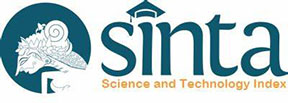Potential of Terminalia catappa Leaf Extract as Bioherbicide on Mikania micrantha Seed Germination
DOI:
https://doi.org/10.32734/jopt.v9i1.8643Keywords:
Bioherbicide, Terminalia catappa, extract, Mikania micranthaAbstract
Mikania micrantha is a weed that is commonly found on agricultural land. Environmentally friendly weed control can be done using bioherbicides because the materials used come from nature. Terminalia catappa contains secondary metabolites so that its bioactive compounds can be used as weed control. This study aims to determine the total secondary metabolite compounds of Terminalia catappa leaves and their effect on Mikania micrantha seed germination. This study used a factorial Completely Randomized Design (CRD). The first factor is various types of solvents aquadest, ethanol and methanol. The second factor was the concentration of the extract application 30%, 50%, 70% and repeated 3 times so that there were 27 experimental units. Data were analyzed using analysis of variance if it had a significant effect, further tests were carried out using 5% BNJ. The results showed that the Terminalia catappa leaf extract with distilled aquadest of 70% was able to prevent the seeds from germinating while the methanol and ethanol solvent extracts were able to inhibit the germination of Mikania micrantha seeds at an application concentration of 30%.
Downloads
References
Abaza, L., Nabil, B, Y., Hedia, M., Faouzia, M, H., Kaouther, M and Mokhtar, Z. 2011. Chetoui Olive Leaf Extracts: Influence of the Solvent Type on Phenolics and Antioxidant Activities. Journal grasas y aceites. (62) 96-104.
Aparicio, M, F., Marco, M., Alessio, C., Susana, V and Antonio, E. 2021. Allelopathic Effect of Quercetin, a Flavonoid from Fagopyrum esculentum Roots in the Radicle Growth of Phelipanche ramosa: Quercetin Natural and Semisynthetic Analogues Were Used for a Structure-Activity Relationship Investigation. Journal Plant. (10) 2-15.
Arifianti, L., Oktarina, R. D dan Kusumawati, I. 2014. Pengaruh Jenis Pelarut Pengektraksi Terhadap Kadar Sinensetin Dalam Ekstrak Daun Orthosiphon stamineus Benth. Jurnal Planta Husada. (2) 1-4.
Chang, C., Yang M H dan Chern, J, C. 2002. Estimation of Total Flavonoid Content in Propolis by Two Complementary Colorimetric Methods. Journal of Food and Drugs Analysis. (10) 178-182.
Day, M. 2012. Mikania micrantha Kunth: mile-a-minute, M. Julien, R. McFadyen, and J. Cullen, eds. Biological control of weeds in Australia. CSIRO Publishing, Melbourne. Pages 368–372.
Franco, D.M., Silva, E.M., Saldanha, L.L., Adachi, S.A., Schley, T.R., Rodrigues, T.M., Dokkedal, A.L., Nogueira, F.T.S and De Almeida, L.F.R. Flavonoids Modify Root Growth and Modulate Expression of SHORT-ROOT and HD-ZIP III. Journal Plant Physiol. (188) 89–95.
Hamidah, H. S., Mukarlina dan Riza L. 2015. Kemampuan Ekstrak Daun Sembung Rambat (Mikania micrantha H. B. K) Sebagai Bioherbisida Gulma Melastoma affine D. Don. Jurnal Protobiont. (4) 89-93.
Hanifatiha, G. 2013. Penggunaan Beberapa Jenis Ekstrak Tumbuhan untuk Menekan Perkecambahan Asystasia intrusa (Forssk.) Blume. Skripsi. Departemen Agronomi dan Hortikultura Fakultas Pertanian. Institut Pertanian Bogor. Bogor.
Hanum F and Van der Maesen, L. J. G. 2007. Plant Resources of South-East Asia 11, Auxiliary Plants ‖ (2nd ed). Indonesia: LIPI Press.
Ilori O, J Otusanya O, Adelusis A. 2007. Phytotoxic Effects of Tithonia Diversifolia on Germination and Growth of Oryza sativa. Journal Botany. (2) 23-32.
Ilori O, J, Otusanya O, Adelusi A, dan Sanni R, O. 2010. Allelopathic Activities of some Weeds in the Asteraceae family. Journal Botany.Vol. 6. 161- 163.
Li, A, Y, Leying, Q, A., Hongping, Y, A., Yangfeng, P, A., Xiaofei, X, A., Ping, L, A and Shuangliang, Z. 2021. Dynamical Density Functional Theory for Solvation Dynamics in Polar Solvent: Heterogeneous Effect of Solvent Orientation. Journal Chemical Engineering Science. (246) 1-10.
Mahardhika, A., Linda, R dan Turnip, M. 2016. Potensi Alelopati Ekstrak Metanol Daun Ketapang Terhadap Perkecamahan Biji Gulma Putri Malu (Mimosa pudica L.). Jurnal Protoiont. (5) 73-76.
Maiti, P. P., Bhakat, R. K dan Bhattacharjee, A. 2010. Evaluation of Allelopathic Potential of an Obnoxious Weed using Mung Bean as a Bioassay Material. International Journal of Science and Nature. (1) 236-241.
Motmainna, M., Abdul, S, J., Kamal, U., Norhayu, B, A., Mominul, I and Mahmudul, H. 2021. Bioherbicidal Properties of Parthenium hysterophorus, Cleome rutidosperma and Borreria alata Extracts on Selected Crop and Weed Species. Journal Agronomy. (11) 2-24.
Puzari, K, C., Bhuyan, R, P, Pranab, D and Deva, N, H, K. 2010. Distribution of Mikania and its Economic Impact on Tea Ecosystem of Assam. Indian Journal of Forestry. (33) 71- 76.
Rajesh B. R., Potty V. P dan Sreelekshmy S. G. 2016. Study of Total phenol, Flavonoids, Tannin Contents and Phytochemical Screening of Various Crude Extracts of Terminalia catappa Leaf, Stem Bark and Fruit. International Journal of Applied and Pure Science and Agriculture. (3) 291-296.
Riskitavani, D, V dan Purani, K, I. 2013. Studi Potensi Bioherbisida Ekstrak Daun Ketapang terhadap Gulma Rumput Teki (Cperus rontudus). Jurnal Sais da Seni Pomits. (2) 2337-3520.
Saeid, A, R., Shatnawi, M and Rida, S. 2010. Allelopathic Effects of Spurge (Euphorbia hierosolymitana) on Wheat (Triticum durum). American-Eurasian Journal Agriculture and Environ. (2) 298-302.
Shen, S., Gaofeng, X., Fudou, Z., Guemei, J., Shufang, L., Meiyun, L., Aidong, C and Yuhua, Z. 2013. Harmful Effects and Chemical Control Study of Mikania micrantha H.B.K in Yunnan, Southwest China. African Journal of Agricultural Reaserch. (8) 5554-5561.
Sun F. A., Qiaojing O. A., Hanxia Y. A., Na L. B dan Changlian Peng. 2019. The Invasive Plant Mikania micrantha Affects the Soil Foodweb and Plant-soil Nutrient Contents in Orchards. Journal Soil Biology and Biochemistry. (139) 1-12.
Susanti, A, T, A., Mayta, N, I dan Siti, F. 2014. Potensi Allelopati Ekstrak Daun Gleichenia linearis (Burm.) Underw. Terhadap Perkecambahan dan Pertumbuhan Anakan Gulma Mikania micrantha (L.) Kunth. Jurnal Jom FMIPA. (1) 1-7.
Zribi, I., Faten, O and Rabiaa, H. 2014. Variation in phytochemical constituents and allelopathic potential of Nigella sativa with developmental stages. South African Journal of Botany. (94) 255-262.
Downloads
Published
How to Cite
Issue
Section
License
Copyright (c) 2022 Jurnal Pertanian Tropik

This work is licensed under a Creative Commons Attribution-ShareAlike 4.0 International License.






















